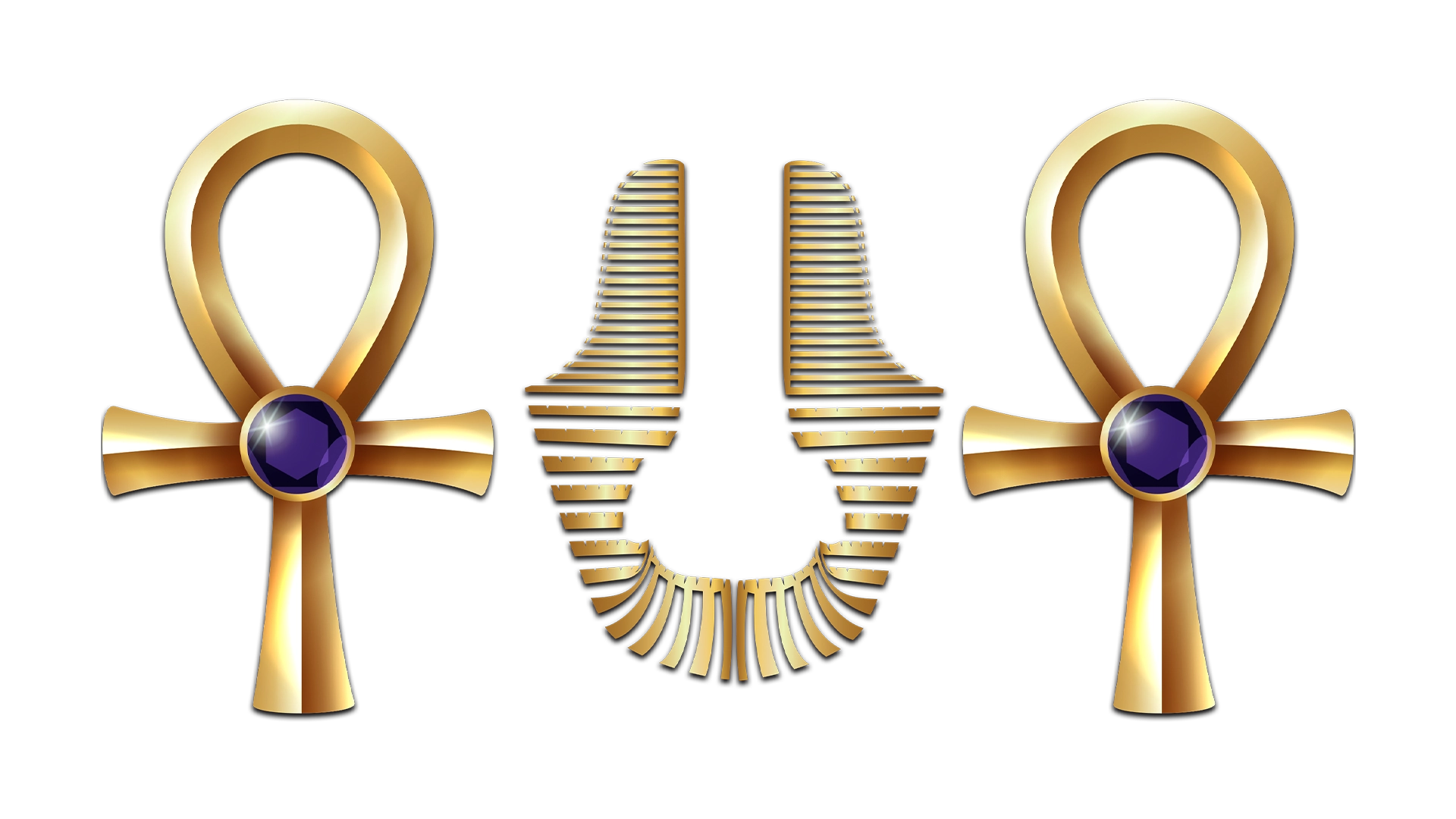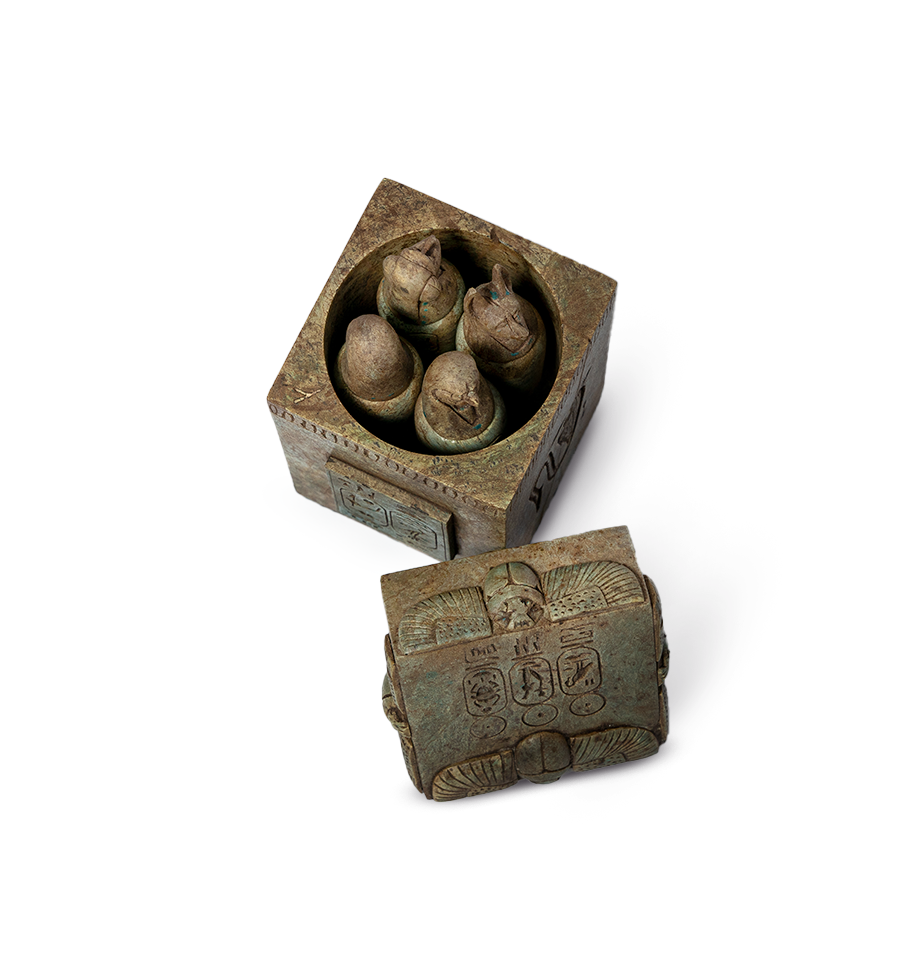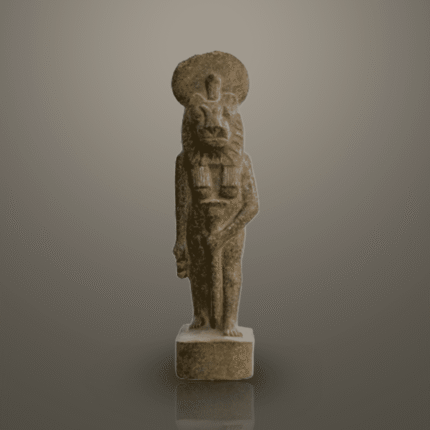The Box with Four Canopic Jars of the Sons of Horus
The The box of the Sons of Horus is a beautiful piece of ancient Egyptian craftsmanship made from burnt limestone. These jars represent the deities Imsety, Hapy, Duamutef, and Qebehsenuef, who were responsible for protecting the internal organs of the deceased. Each jar had a specific role: Imsety for the liver, Hapy for the lungs, Duamutef for the stomach, and Qebehsenuef for the intestines.
Importance of Organ Preservation in the Afterlife
The ancient Egyptians believed that preserving these organs was vital for the rebirth of the deceased in the afterlife. The use of The box of the Sons of Horus dates back to the Old Kingdom. By the New Kingdom, the jars became more elaborate, often adorned with religious symbols like the double crown. This crown represented the unity of Upper and Lower Egypt, enhancing the spiritual significance of these jars.
Remarkable Craftsmanship
In addition to their religious meaning, the craftsmanship of the jars is outstanding. The intricate carvings and use of burnt limestone reflect the skill of Egyptian artisans. The Sons of Horus featured on the jars symbolize the strong link between art and spirituality in ancient Egypt. These symbols were not just for decoration—they played a protective role, ensuring the safe journey of the deceased into the afterlife.
Role of the Sons of Horus
The Sons of Horus held a significant place in Egyptian cosmology. Their role extended beyond the physical world, symbolizing balance and protection. Without their protection, the deceased’s journey to the afterlife would be at risk, highlighting the importance of placing these jars in tombs and burial chambers.
For more details on canopic jars and their history, read our Canopic Jars Guide. Interested in more handcrafted alabaster products? Explore our Alabaster Collection to see the artistry of Egyptian craftsmanship.











Reviews
There are no reviews yet.